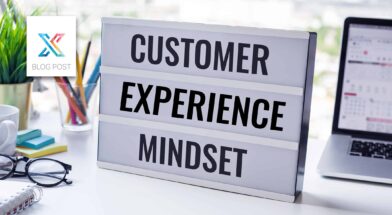In the world of professional services, it’s easy to assume we know what our clients want—until we stop and honestly ask. Hosting a client panel is one of the most effective ways to bridge the gap between assumption and understanding, building trust while uncovering insights that can transform your business. When done thoughtfully, client panels become more than just a listening session—they become a strategic growth tool.
Here’s how to host client panels that leave a lasting impact on your internal team and the clients you serve.
1. Start with the Right Clients
Your panel is only as strong as the voices in the room. Start by selecting 3–4 clients who closely match your Ideal Client Profile—the type of clients and work your firm wants to attract more of. This ensures that the feedback you gather is aligned with your strategic direction. For firms with multiple offices, consider hosting localized panels to reflect regional client experiences accurately.
2. Include Your Seller-Doers—and Then Some
Client panels aren’t just for executives or marketing leaders. Invite your seller-doers—the professionals who sell and deliver work. These individuals are on the front lines and can benefit most directly from hearing client perspectives.
Additionally, consider including future sellers, as well as back-of-house staff such as IT. When internal teams hear client feedback firsthand, the ideas that surface are often more grounded, innovative, and actionable.
Aim for an audience of 20–40 people per session to keep the experience engaging but not overwhelming.
3. Make Clients Feel Valued, Not Obligated
Don’t shy away from inviting clients. Many firms fear they’re imposing, but in reality, most clients welcome the opportunity to be heard. They appreciate being asked to contribute and often find value in sharing their experiences. A well-structured panel typically requires only 1–3 hours of a client’s time—and many are happy to give even more.
4. Lay the Groundwork with One-on-One Interviews
Before the panel, conduct individual interviews with each panelist. These short conversations help you understand each client’s unique perspective and identify key themes to explore during the live discussion. Use a few open-ended questions like:
- “What’s your organization’s biggest priority right now?”
- “What’s your greatest challenge in working with partners like us?”
- “What do you wish your consulting partners would start, stop, or keep doing?”
These conversations build rapport and ensure the panel discussion feels targeted and meaningful.
5. Prep Your Panelists Like Pros
To ease nerves and promote transparency, consider holding a virtual prep meeting ahead of the event. Walk panelists through the questions you plan to ask and share notes from your one-on-one interviews. Let them know what you hope they’ll share and why it matters. This type of coaching helps panelists feel confident and ready to contribute in a productive manner.
6. Structure the Live Panel for Focus and Flow
On panel day, keep the discussion dynamic. Rather than asking each panelist the same question, direct specific questions to specific people, then invite others to weigh in if they wish. This approach avoids repetition and keeps the dialogue fresh. Rotate between panelists, ensuring everyone has a chance to speak without the conversation becoming predictable.
7. Let the Audience Ask Questions
Reserve time for audience Q&A. When employees are given the opportunity to ask clients questions directly, it not only builds empathy but also sparks authentic, real-time insights. Consider using tools like PollEV.com for larger groups or to help introverts feel more comfortable engaging.
8. Choose a Moderator Who Listens, Not Talks
The success of your panel hinges on the moderator. Rather than selecting the most outgoing person in the room, look for someone who is an empathetic, confident listener. A strong moderator facilitates conversation, ensures balanced participation, and avoids injecting personal commentary. The spotlight should stay on the clients.
9. Synthesize, Then Strategize
Immediately after the panel, hold an internal “listening synthesis” workshop. Invite your team to reflect on what they heard and identify key themes, valuable insights, and areas for improvement. One firm took this a step further by inviting clients into small breakout groups after the panel to co-create solutions for specific issues. The result? Better ideas, stronger relationships, and a sense of shared purpose.
10. Report Back and Follow Through
Finally, close the loop. Share a summary of key takeaways, commitments, and next steps with your internal team and the broader organization. This step ensures accountability and reinforcement that the insights shared by your clients were heard—and are being acted upon.
Why it Matters
Hosting a client panel isn’t just about collecting feedback—it’s about showing your clients that their voice matters. It’s about aligning your team around what really drives client satisfaction and loyalty. When done well, client panels become a catalyst for innovation, retention, and referral.
And in an industry where one in four clients has an unvoiced complaint, a client panel may be the conversation that uncovers the one thing you most need to hear.
Need help organizing your next panel or want an electronic feedback system that ensures you never miss a client insight? Learn more at www.clientsavvy.com.





